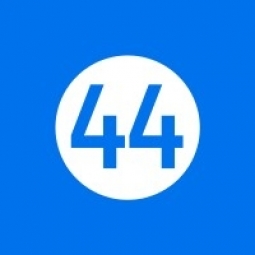Technology Category
- Analytics & Modeling - Predictive Analytics
- Platform as a Service (PaaS) - Application Development Platforms
Applicable Industries
- Marine & Shipping
- Transportation
Applicable Functions
- Logistics & Transportation
- Warehouse & Inventory Management
Use Cases
- Real-Time Location System (RTLS)
- Supply Chain Visibility
Services
- System Integration
About The Customer
Mondiale VGL is the largest privately-owned international freight forwarding and logistics company in Australasia, resulting from the merger of two of the largest freight companies in the Asia Pacific region, VISA Global Logistics Pty Ltd (VISA) and Mondiale Freight Services Limited (Mondiale). The company has an extensive global network of 70+ offices and 200+ agents, servicing trade lanes across Southeast Asia, China, Europe, and the USA to and from Australasia. Mondiale VGL handles over 500,000 containers and 25 million kilograms of air freight per annum, employing more than 1,500 people globally in freight forwarding, customs clearance, 3PL warehousing, as well as transport and distribution.
The Challenge
Mondiale VGL, the largest privately-owned international freight forwarding and logistics company in Australasia, was facing a significant challenge in maintaining visibility and control over its vast supply chain. The company, which handles over 500,000 containers and 25 million kilograms of air freight per annum, was struggling to provide its customers with real-time information about their cargo. The traditional method of manually checking ship and container status was not only time-consuming and inconsistent, but also impractical given the volume of cargo the company handles. Furthermore, the company operates in an environment where teams do not have the time for unnecessary phone calls or emails, making it crucial to rely on automated workflows, exception management, and predictive analytics to keep its customers informed.
The Solution
To address this challenge, Mondiale VGL implemented project44’s advanced Ocean Visibility solution. This solution provides both Mondiale VGL and its customers with accurate and comprehensive information to respond proactively to disruptions. The real-time data from project44 is fed into Mondiale VGL's proprietary OneTrack system, making it instantly visible to customers. project44 integrates data from all major providers, shipping lines, stevedores, or terminals, and presents that data in a standard language that is instantly accessible when needed. The use of project44’s enhanced real-time ocean tracking and schedule data has resulted in milestone completeness improvement from 50-70 percent to higher than 90 percent. Furthermore, Mondiale VGL plans to use the OneTrack system and the data from project44 to build a comprehensive and unique visual tracking system for customers, providing an added layer of comfort and enabling them to make better business decisions.
Operational Impact
Quantitative Benefit

Case Study missing?
Start adding your own!
Register with your work email and create a new case study profile for your business.
Related Case Studies.

Case Study
Airport SCADA Systems Improve Service Levels
Modern airports are one of the busiest environments on Earth and rely on process automation equipment to ensure service operators achieve their KPIs. Increasingly airport SCADA systems are being used to control all aspects of the operation and associated facilities. This is because unplanned system downtime can cost dearly, both in terms of reduced revenues and the associated loss of customer satisfaction due to inevitable travel inconvenience and disruption.

Case Study
IoT-based Fleet Intelligence Innovation
Speed to market is precious for DRVR, a rapidly growing start-up company. With a business model dependent on reliable mobile data, managers were spending their lives trying to negotiate data roaming deals with mobile network operators in different countries. And, even then, service quality was a constant concern.

Case Study
Digitize Railway with Deutsche Bahn
To reduce maintenance costs and delay-causing failures for Deutsche Bahn. They need manual measurements by a position measurement system based on custom-made MEMS sensor clusters, which allow autonomous and continuous monitoring with wireless data transmission and long battery. They were looking for data pre-processing solution in the sensor and machine learning algorithms in the cloud so as to detect critical wear.

Case Study
Cold Chain Transportation and Refrigerated Fleet Management System
1) Create a digital connected transportation solution to retrofit cold chain trailers with real-time tracking and controls. 2) Prevent multi-million dollar losses due to theft or spoilage. 3) Deliver a digital chain-of-custody solution for door to door load monitoring and security. 4) Provide a trusted multi-fleet solution in a single application with granular data and access controls.

Case Study
Vehicle Fleet Analytics
Organizations frequently implement a maintenance strategy for their fleets of vehicles using a combination of time and usage based maintenance schedules. While effective as a whole, time and usage based schedules do not take into account driving patterns, environmental factors, and sensors currently deployed within the vehicle measuring crank voltage, ignition voltage, and acceleration, all of which have a significant influence on the overall health of the vehicle.In a typical fleet, a large percentage of road calls are related to electrical failure, with battery failure being a common cause. Battery failures result in unmet service agreement levels and costly re-adjustment of scheduled to provide replacement vehicles. To reduce the impact of unplanned maintenance, the transportation logistics company was interested in a trial of C3 Vehicle Fleet Analytics.

Case Study
3M Gains Real-Time Insight with Cloud Solution
The company has a long track record of innovative technology solutions. For example, 3M helps its customers optimize parking operations by automating fee collection and other processes. To improve support for this rapidly expanding segment, 3M needed to automate its own data collection and reporting. The company had recently purchased the assets of parking, tolling, and automatic license plate reader businesses, and required better insight into these acquisitions. Chad Reed, Global Business Manager for 3M Parking Systems, says, “With thousands of installations across the world, we couldn’t keep track of our software and hardware deployments, which made it difficult to understand our market penetration.” 3M wanted a tracking application that sales staff could use to get real-time information about the type and location of 3M products in parking lots and garages. So that it could be used on-site with potential customers, the solution would have to provide access to data anytime, anywhere, and from an array of mobile devices. Jason Fox, Mobile Application Architect at 3M, upped the ante by volunteering to deliver the new app in one weekend. For Fox and his team, these requirements meant turning to the cloud instead of an on-premises datacenter. “My first thought was to go directly to the cloud because we needed to provide access not only to our salespeople, but to resellers who didn’t have access to our internal network,” says Fox. “The cloud just seemed like a logical choice.”







